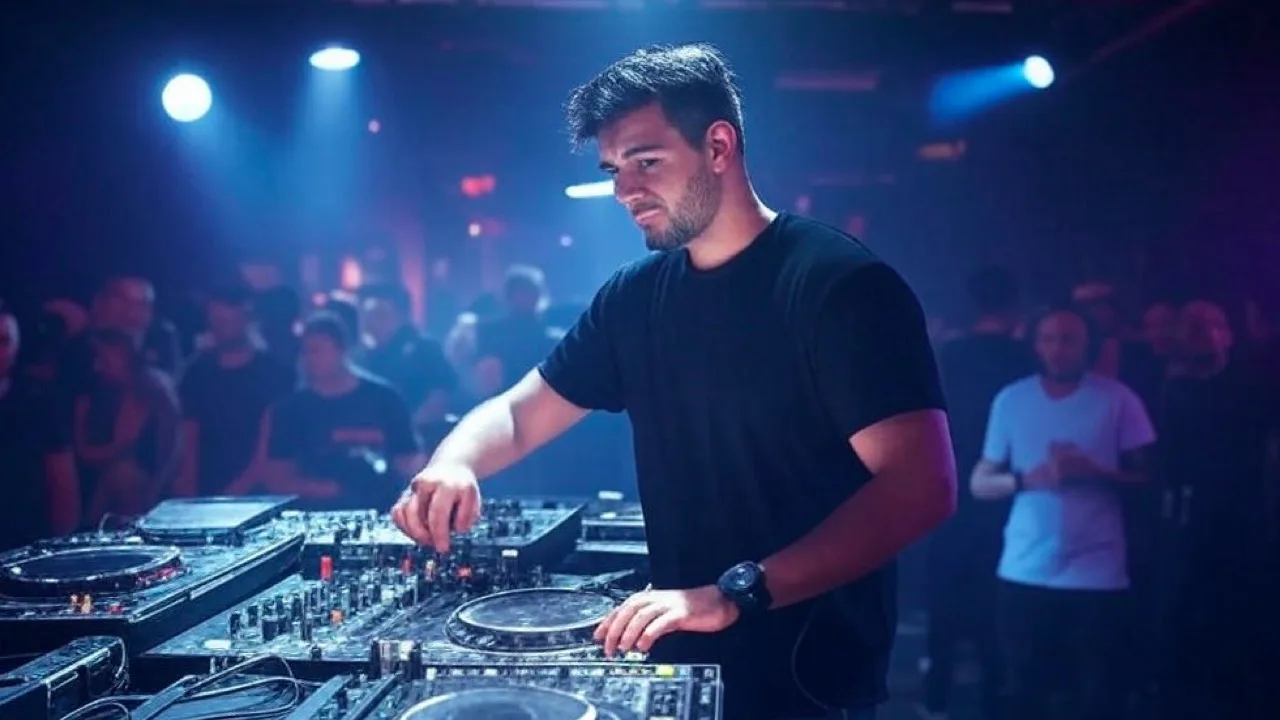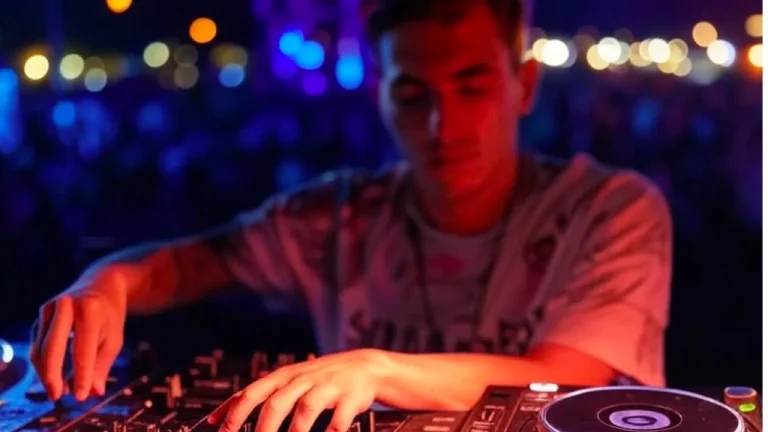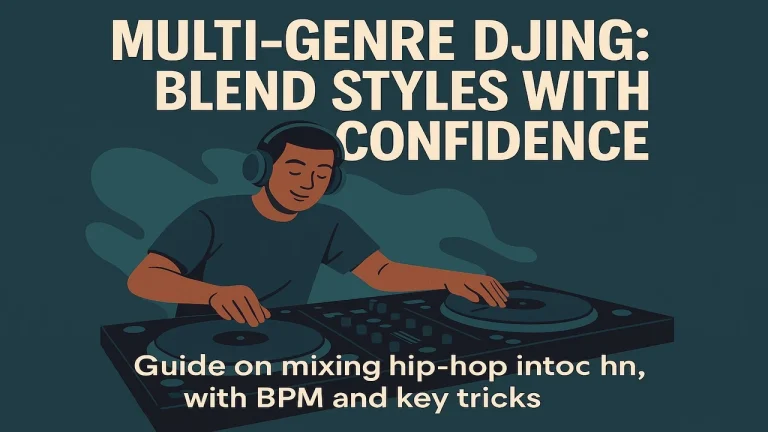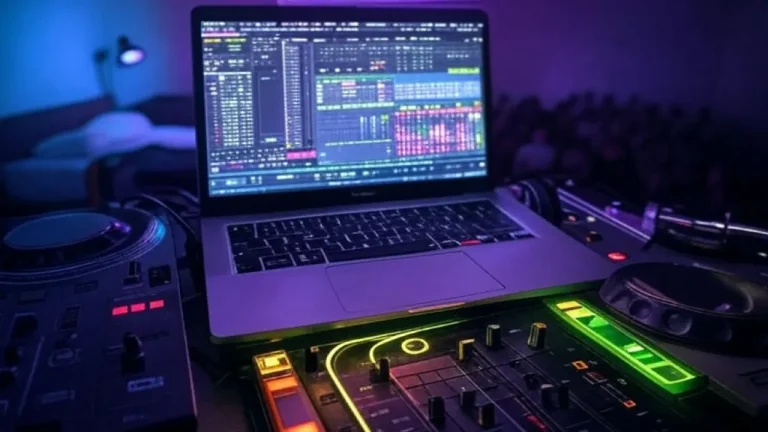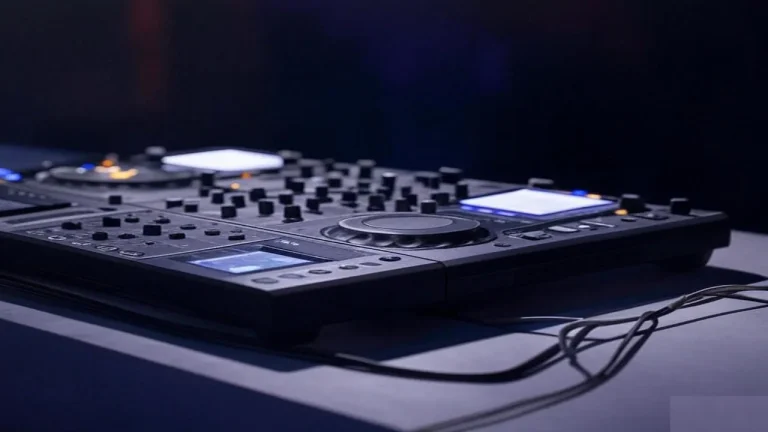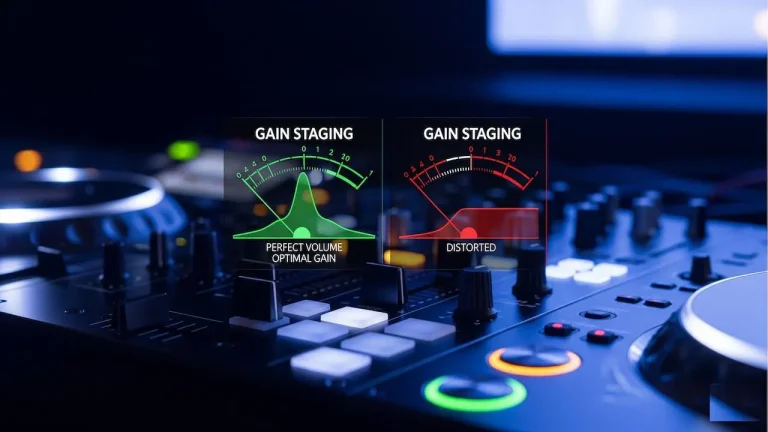Every DJ makes mistakes during live performances, but professionals know how to recover instantly while maintaining crowd energy. The difference between amateur and seasoned DJs lies not in perfection, but in seamless mistake recovery that keeps the dancefloor moving.
Mistakes happen to everyone, from bedroom DJs to world-famous headliners. However, your reaction determines whether a slip-up becomes a set-killer or an opportunity to showcase your skills. Professional DJs master the art of bouncing back quickly, turning potential disasters into creative moments that maintain the party atmosphere.
Common DJ Mistakes During Live Sets
Understanding typical performance errors helps you prepare recovery strategies. Most live DJ mistakes fall into predictable categories that experienced performers anticipate.
Beatmatching failures occur when tracks drift out of sync, creating an awkward rhythmic clash that can instantly kill dancefloor energy. Train sync disruption happens frequently during complex transitions or when DJs rely too heavily on auto-sync features.
| Mistake Type | Frequency | Recovery Time | Crowd Impact |
|---|---|---|---|
| Beat mismatch | Very Common | 5-10 seconds | Medium |
| Wrong track selection | Common | 30-60 seconds | High |
| EQ disasters | Common | 2-5 seconds | Low |
| Technical failures | Rare | Variable | Very High |
Furthermore, track selection errors happen when DJs misjudge crowd mood or energy levels. Playing the wrong genre, tempo, or energy level can instantly clear a packed dancefloor.
Additionally, EQ mixing problems create muddy sound or harsh frequency clashes. Bass buildup, mid-range conflicts, and treble harshness are typical EQ-related mistakes during live mixing.
Instant Recovery Techniques for Beat Mistakes
Quick beatmatching recovery saves your set when rhythm goes wrong. Professional DJs use several techniques to regain synchronization without losing crowd momentum.
The slam technique involves quickly cutting the problematic track and bringing in a pre-cued backup song that matches the current tempo. This method works best when you have emergency tracks ready at various BPMs.
Meanwhile, the gradual realign method uses pitch fader adjustments to slowly bring beats back into sync. This technique requires advanced beatmatching skills and works best with longer mixing windows.
Emergency Beatmatching Steps
Speed correction starts with identifying which deck runs too fast or slow. Use headphones to isolate problem tracks and compare them to the master output.
- Cut problematic track volume immediately to minimize crowd disruption
- Adjust pitch fader in small increments while monitoring headphones
- Use jog wheel nudges for fine tempo adjustments
- Gradually bring corrected track back into the mix
- Have backup tracks ready at matching tempos
Moreover, the loop rescue method creates short loops on functioning tracks while fixing synchronization issues. This technique gives you time to correct problems without losing energy flow.
Track Selection Recovery Strategies
Wrong song choices kill dancefloor energy, but smart recovery keeps crowds engaged. Professional DJs develop systems for quickly switching to better track selections.
The quick escape method uses pre-marked cue points to jump to mixing-friendly sections of problematic tracks. Set cue points at breakdown sections, instrumental parts, or natural ending points for emergency exits.
Additionally, the air horn method involves using sound effects or drops to mask transitions while switching tracks. This technique works particularly well in club environments where crowds expect occasional DJ interruptions.
| Recovery Method | Best Use Case | Crowd Reaction | Skill Level Required |
|---|---|---|---|
| Quick cut method | Wrong energy tracks | Neutral | Beginner |
| Mashup transition | Genre mismatches | Positive | Advanced |
| Loop extension | Tempo problems | Neutral | Intermediate |
| Effect masking | Any mistake | Variable | Intermediate |
Furthermore, the crossfade slam technique involves rapidly switching between tracks using crossfader movements. This method works best with high-energy electronic music where sudden changes feel natural.
Also, creative transition techniques help mask poor track selections by using creative mixing methods that make song changes feel intentional rather than corrective.
Maintaining Crowd Energy During Recovery
Crowd engagement remains critical during mistake recovery periods. Your body language, energy level, and interaction style determine whether audiences notice problems or stay focused on dancing.
Confident body language masks technical difficulties by projecting control and enthusiasm. Keep moving, maintain eye contact with dancers, and avoid looking stressed or frustrated when problems occur.
Meanwhile, strategic microphone use redirects attention during recovery moments. Simple shout-outs like “How we feeling?” or “Let me hear you!” engage crowds while you fix technical issues behind the scenes.
Crowd Psychology During Mistakes
Audiences mirror DJ energy levels during problematic moments. If you stay calm and confident, crowds typically continue dancing even through minor technical difficulties.
However, visible panic or frustration spreads quickly to dancefloors. Crowds lose energy when DJs appear stressed, confused, or angry about technical problems.
Therefore, the poker face technique becomes essential for mistake recovery. React internally while maintaining external composure that projects professional control over the situation.
Technical Failure Recovery Plans
Equipment failures require predetermined backup systems and quick decision-making. Professional DJs prepare contingency plans for common technical problems before they occur.
Hardware backup systems include secondary controllers, backup laptops, and emergency USB drives with pre-loaded music libraries. Proper DJ gear setup includes redundant systems for critical components.
Additionally, software failure recovery involves using standalone hardware modes or switching to backup applications. Many modern controllers function without computer connectivity for emergency situations.
Emergency Equipment Protocols
Primary system failures demand immediate action to maintain set continuity. Have backup equipment connections ready and tested before performances begin.
- Keep backup controller connected and ready to activate
- Maintain emergency music on multiple storage devices
- Practice switching between primary and backup systems
- Know venue sound system connection points
- Have venue staff contact information readily available
Moreover, venue staff coordination helps resolve technical issues quickly. Establish communication with sound engineers and technical staff before your set begins.
Psychological Aspects of Mistake Recovery
Mental preparation affects recovery success more than technical skill alone. Professional DJs develop psychological resilience that helps them bounce back from performance errors.
Mistake acceptance reduces panic and enables faster recovery responses. Acknowledging that errors will happen mentally prepares you for calm, logical problem-solving during live situations.
Furthermore, the growth mindset approach treats mistakes as learning opportunities rather than failures. Each error teaches valuable lessons about performance improvement and crowd management.
Additionally, reading crowd reactions helps gauge mistake severity and recovery success. Sometimes problems seem worse to DJs than audiences actually perceive them.
Practice Routines for Mistake Recovery
Regular practice sessions should include intentional mistake scenarios and recovery drills. Basic DJ mixing practice should incorporate error recovery from the beginning stages of learning.
Controlled mistake practice involves deliberately creating problems during home sessions and practicing various recovery techniques. This method builds muscle memory for handling real performance issues.
Meanwhile, recording practice sessions helps identify common mistake patterns and evaluate recovery effectiveness. Review recorded sessions to analyze successful and unsuccessful recovery attempts.
| Practice Type | Frequency | Focus Area | Skill Development |
|---|---|---|---|
| Deliberate mistakes | Weekly | Quick recovery | Reaction time |
| Equipment failures | Monthly | Backup systems | Technical skills |
| Crowd simulation | Bi-weekly | Energy maintenance | Performance skills |
| Recording analysis | After each session | Improvement tracking | Self-assessment |
People Also Ask
Professional DJs use predetermined recovery strategies such as emergency cue points, backup tracks, and confident body language to mask problems while maintaining crowd energy.
Switch to backup hardware immediately, use standalone controller modes if available, or coordinate with venue staff for emergency music playback while resolving technical issues.
Maintain confident body language, use strategic microphone interaction, and practice quick recovery techniques that minimize mistake duration and crowd impact.
Generally avoid drawing attention to minor technical errors, but use humor and crowd engagement for obvious mistakes that audiences clearly notice.
FAQs About Handling DJ Mistakes Live
Most beatmatching errors should be corrected within 5-10 seconds to minimize crowd disruption. Longer recovery times risk losing dancefloor energy and momentum.
Essential backup equipment includes secondary controllers, backup music storage devices, emergency cables, and standalone hardware for software-independent operation.
Experienced DJs develop faster reaction times, better mistake recognition, and more diverse recovery techniques through regular practice and live performance exposure.
Sometimes mistakes create authentic moments that humanize DJs and increase crowd connection, especially when handled with humor and confidence.
Reading crowd reactions helps DJs assess mistake severity and adjust recovery strategies based on audience response and energy levels.
Mobile DJs often have more flexibility to restart songs or make announcements, while club DJs must maintain continuous energy flow without interrupting the party atmosphere.
